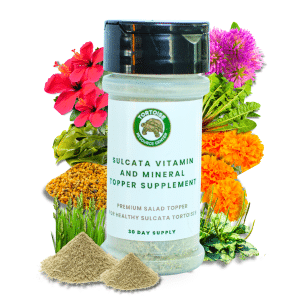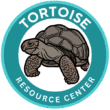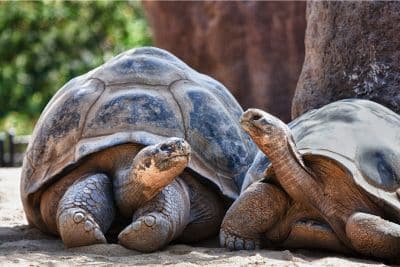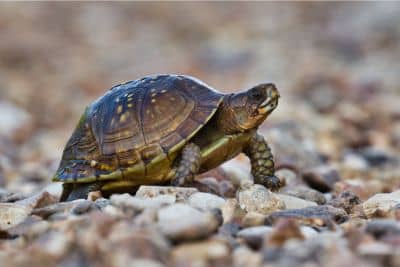One of the largest tortoises on earth, Aldabra tortoises (Aldabrachelys gigantea) are some of the most awe-inspiring animals alive today.
Stars of zoos, television shows, and wildlife preserves, these animals capture the imagination of all who see them. Some people even keep Aldabra tortoises as pets, though their great size presents significant challenges to those who elect to do so.
Here, I’ll share some of the most fascinating facts about the range, habitat, physical traits, and behavior of these giant tortoises below.
Range and Habitat
As with virtually every other animal on the planet, Aldabra tortoises have evolved to thrive within the habitats found in their natural range.
Aldabra Tortoise Range
Aldabra tortoises are native to a single island – Aldabra Island, one of the Seychelles, located northeast of Madagascar. The island is often called an atoll, as the island’s foundation is a circular coral reef, which features a large lagoon in the center of the island. The outer edge of the island is comprised of jagged cliffs, but a mangrove swamp and coastal dunes surround the interior lagoon.
Humans have also introduced Aldabra tortoises to the islands of Mauritius and Reunion, and they’re also found in zoos, educational facilities, and private collections around the world.
Aldabra Tortoise Habitat
The tortoises tend to inhabit a range of different habitats on the island, but the largest number of individuals live in the island’s grasslands. In fact, the grazing habits of the tortoises often create distinct areas of short, dense grass called “tortoise turf.”
Physical Traits
Aldabra tortoises are spectacular animals who’ve evolved interesting bodies to help suit their unusual lifestyles.
Size
Aldabra tortoises are often considered one of two “giant” tortoise species currently alive. There were actually as many as 18 giant tortoise species in the recent past, but each one, save for the Aldabra tortoise and the Galapagos tortoise (Chelonoidis niger), was hunted to extinction by humans.
And while they do not grow quite as large on average as Galapagos tortoises, Aldabra tortoises are undeniably enormous.
Large males may have carapaces measuring 4 feet in length or more, and many weigh more than 500 pounds. Impressively, the largest Aldabra ever documented in the wild tipped the scales at 672 pounds! Females are generally slightly smaller, with most individuals weighing less than 350 pounds.
Morphology
In most respects, Aldabra tortoises are built like most other tortoises – they are simply much larger. They have elephantine feet like other tortoises, and they have strong, protective shells like most other tortoises (even though wild individuals have no natural predators aside from humans).
However, they do exhibit a few key distinctions. For example, Aldabra tortoises have extremely long necks that are proportionately longer than those of most other species. These long necks enable the tortoises to reach fruit from greater heights.
Are You Starving Your Tortoise?
Save 10% on premium tortoise food and supplements from Tortoise Resource Center on Amazon now using code BUYNOWGET10

Sulcata Vitamin & Mineral Topper Supplement
30-Day Supply | 2 oz (56 g)
$24.99

Baby Sulcata Tortoise Superfood Powder
30-Day Supply | 2.5 oz (70.8 g) Bag
$24.99
Diet
Aldabra tortoises – like most tortoises – are primarily herbivorous. However, they will also consume invertebrates and carrion on occasion. In fact, researchers recently observed an Aldabra tortoise stalk, capture, and consume a small bird – something that hadn’t been seen before.

Aldabra tortoises consume a wide variety of plant species, ranging from grasses and weeds to the leaves of trees. Fruit is also an important dietary staple.
In fact, Aldabra tortoises play an important role in seed dispersal. They have mouths that are large enough that they can consume fruits whole, which prevents the seeds inside the fruit from being damaged. This, combined with the fact that it often takes several weeks for the fruit to pass through the tortoise’s system, means that they may deposit these seeds quite far away from the parent tree or shrub.
Behaviour
Because the Aldabra Atoll is located in a tropical region that remains warm all year long, Aldabra tortoises do not need to brumate. Instead, they remain active throughout the year. Nevertheless, breeding appears to be a strongly seasonal affair, with mating generally taking place between February and May. Females deposit clutches shortly thereafter, and some will produce a second clutch in subsequent months.
Interestingly, Aldabra tortoises are among the most social of all tortoise species. Some individuals tend to keep to themselves and live alone, but others join large herds. The reason for this kind of gregarious behavior is not fully understood. However, despite these social habits, male Aldabra tortoises may still fight with other males for breeding rights.
Aldabra tortoises alter their habitats quite a bit. In addition to creating “tortoise turf” in the areas in which they often feed, they have also been known to knock trees down to access leaves or fruit that’s out of reach. Aldabra tortoises also wallow in the mud to help keep themselves cool and coat their bodies in mud to provide protection from biting insects. This can lead to a large number of depressions being formed in a relatively small area.
For more facts and stats about tortoise adaptations and interactions, head over to this related article.
Do Aldabra Tortoises Make Good Pets?
Because Aldabra tortoises are often quite expensive and they have incredible space requirements, which few keepers can satisfy, they aren’t as commonly kept as some other tortoise species. However, they can make good pets for those who have enough space to allocate for these giant tortoises.

Feeding Aldabra tortoises is generally easy, as they are opportunistic eaters who’ll generally consume a wide range of fruits and vegetables. However, it is important to understand that these large tortoises require an enormous quantity of food. Over time, this will add up to a very significant sum of money.
It’s also important to realize that unlike small tortoises, which can easily be lifted, Aldabra tortoises present significant animal-management challenges. It is essentially impossible to move them without the help of several other humans, and it will also be extremely difficult to transport them should you move or need to visit the vet.
Aldabra Tortoise Stats at a Glance
To help give you a better idea of how unique these amazing tortoises are, we’ve put together some of the best quick stats about the species below.
- Typical Hatchling Length: Approximately 3 inches
- Typical Hatchling Weight: 30 to 50 grams
- Average Adult Length: 3 to 4 feet
- Average Adult Weight: 350 to 500 pounds
- Average Annual Fecundity: 4 to 25 eggs (a significant portion of which are often infertile)
- Recommended Enclosure Size: At least 300 square feet
- Typical Lifespan: Unclear, but they’re thought to routinely reach 75 to 100 years of age. Some researchers suspect that they may be capable of reaching 200 years, and at least one individual was documented to reach 152 years of age.
If you enjoyed this article, here’s a link to Pinta Island Tortoise: Background and Facts
Citations
- Smithsonian’s National Zoo & Conservation Biology Institute – Aldabra tortoise
- AnAge — AnAge entry for Aldabrachelys gigantea
- Orianne Society – Aldabra Giant Tortoise


